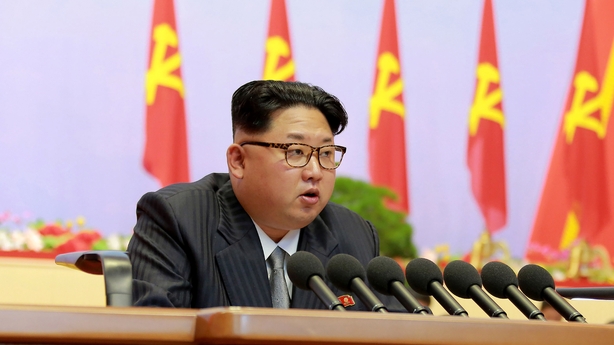Isolated North Korea has restarted coded radio broadcasts, presumed to be targeted at its spies, for the first time in 16 years, South Korea has said.
The messages, a recording of which was broadcast by South Korean TV channel KBS, were disguised as a mathematics lesson for distance learners.
"Now we'll begin a mathematics review assignment for members of the 27th expeditionary unit of the distance learning university," the woman's voice crackled over the radio.
"Turn to page 459, question 35; 913, question 55; 135, question 86."
North and South Korea are still technically at war after the 1950-53 Korean War ended in a truce, not a peace treaty, and tensions are running high.
The radio messages, also known as numbers stations, work by broadcasting strings of seemingly random numbers over shortwave signals to an agent in the field.
The technique, a method of sending one-way secret messages, dates to the French Resistance in World War II and is still in use by some governments today.
South Korea jams most North Korean radio frequencies but Pyongyang-based Voice of Korea broadcasts on shortwave signals which can be picked up far beyond the Korean peninsula, and are difficult to jam.
The receiving agent, armed with a radio and a pen, uses an easily concealed pad with corresponding letters on it to listen to and decrypt the secret message.
"(North Korean) numbers broadcasts have been on hold for quite some time but have recently resumed, something we think is very regrettable," Jeong Joon-hee, a spokesman for South Korea's unification ministry, said.
It was not clear whether the signals were meant to deceive or deliver genuine instructions.
"I can't speak to their intentions, but we hope that the North will refrain from an old practice like this and behave in a manner that's conducive to improving South-North ties," Ms Jeong said.
North Korea claims ballistic missile test
North Korea said it had conducted a ballistic missile test that simulated preemptive strikes against South Korean ports and airfields used by the US military.
The North's leader, Kim Jong-un, supervised the exercise that successfully tested the simulated detonation of nuclear warheads mounted on missiles, its official KCNA news agency reported.

It did not give the date of the exercise, as it customarily reports activities of its leader without dates or locations.
Rodong Sinmun, the ruling Workers' Party's official newspaper, carried photographs of Kim with military aides, apparently observing a ballistic missile exercise.
North Korea fired three ballistic missiles that flew between 500km and 600km into the sea off its east coast, South Korea's military said, in defiance of UN Security Council resolutions and the latest in a series of provocative moves by the isolated country after a series of nuclear weapons tests.
"The drill was conducted by limiting the firing range under the simulated conditions of making preemptive strikes at ports and airfields in the operational theatre in South Korea where the US imperialists' nuclear war hardware is to be hurled," KCNA said.
"And it once again examined the operational features of the detonating devices of nuclear warheads mounted on the ballistic rockets at the designated altitude over the target area."
Yang Uk, a senior researcher at the Korea Defence and Security Forum and a policy adviser to the South Korean navy, said there was little firm evidence to suggest the North had succeeded in developing a nuclear warhead for missiles.
"But it's a reminder that they are continuing to pursue nuclear warhead development, and that itself is an escalation of risks for us," he added.
The missile launches were seen as a show of force a week after South Korea and the United States chose a site in the South to deploy the Terminal High Altitude Area Defence (THAAD) anti-missile system to counter threats from the North.
North Korea had threatened a "physical response" to the move.

